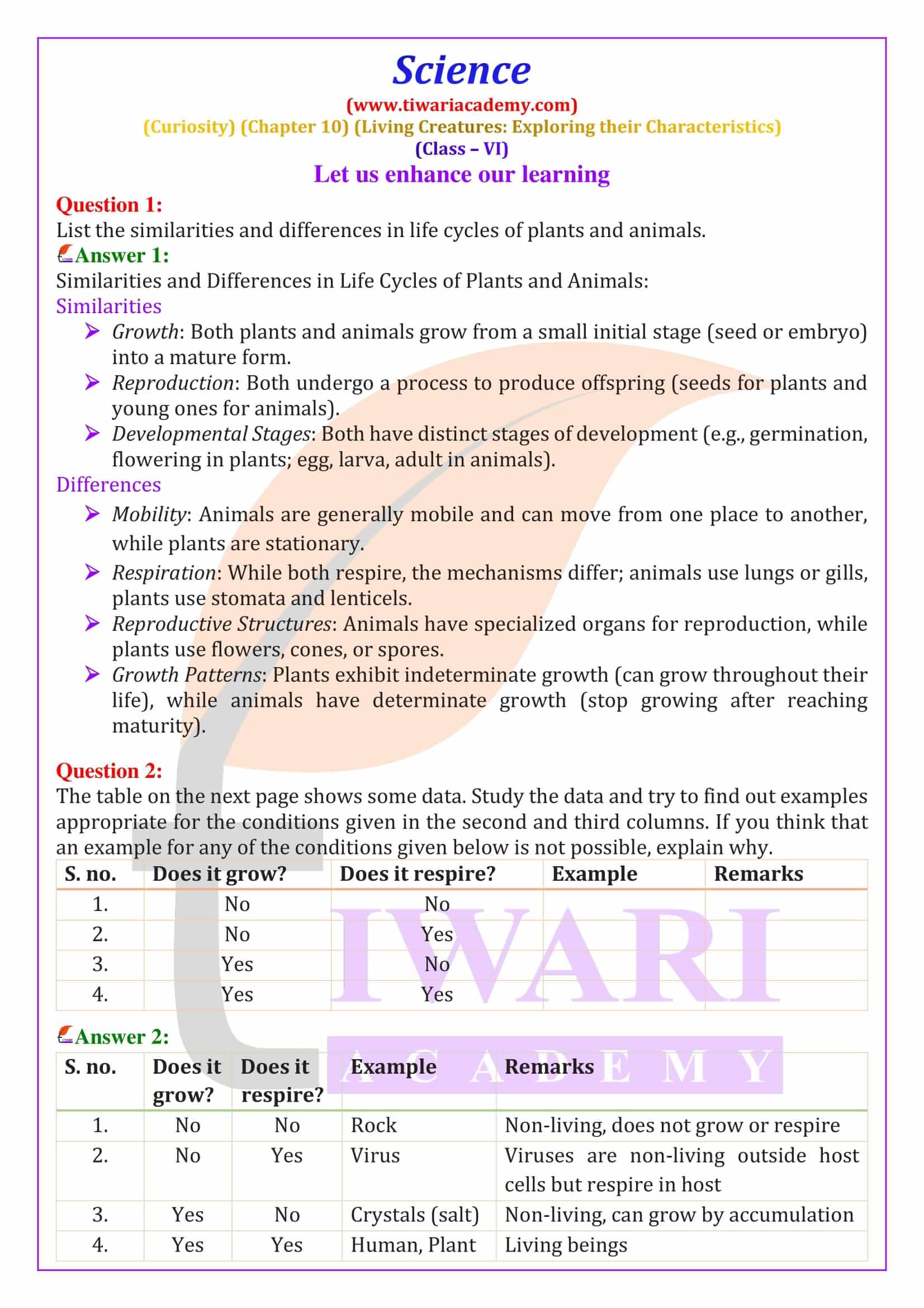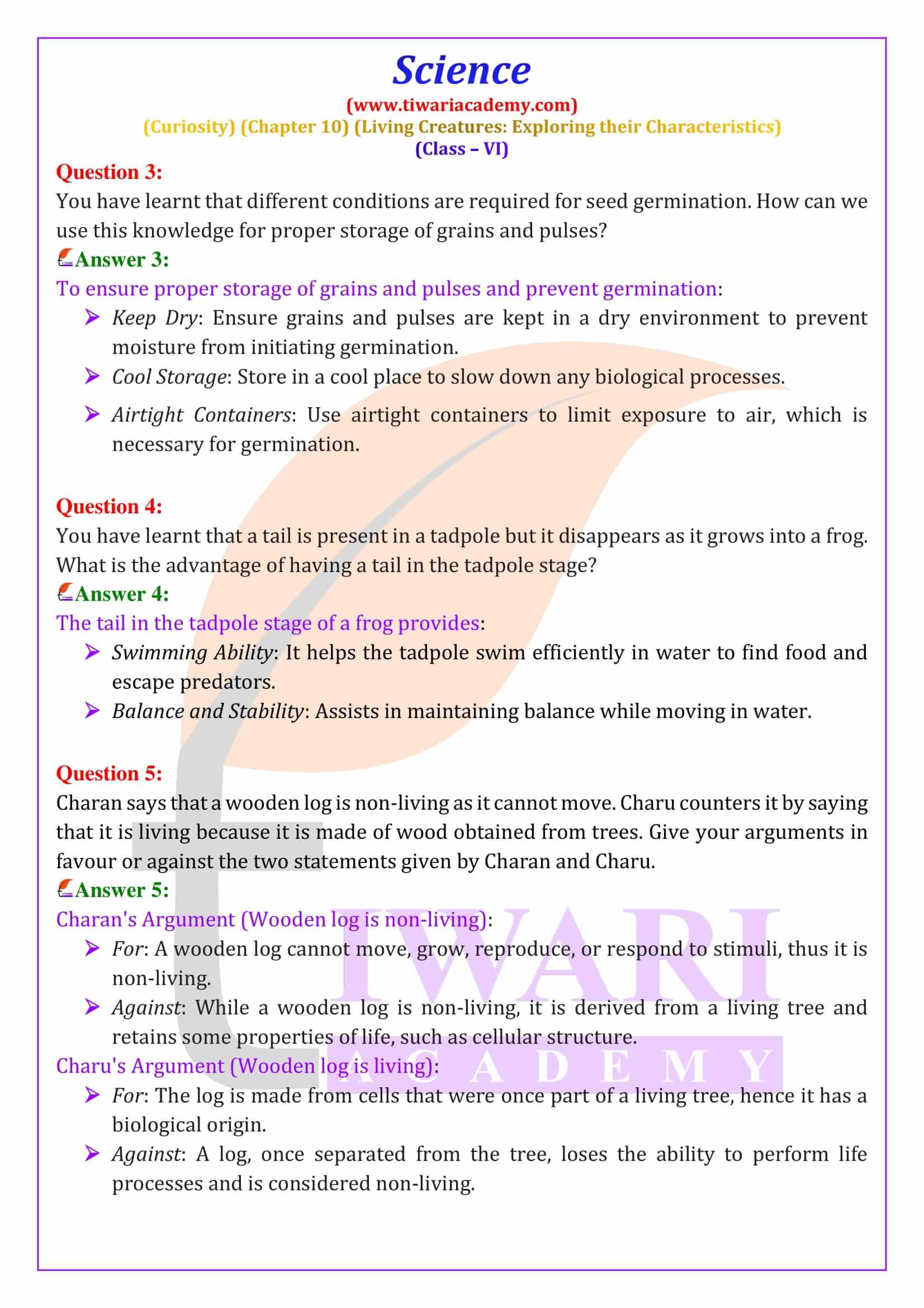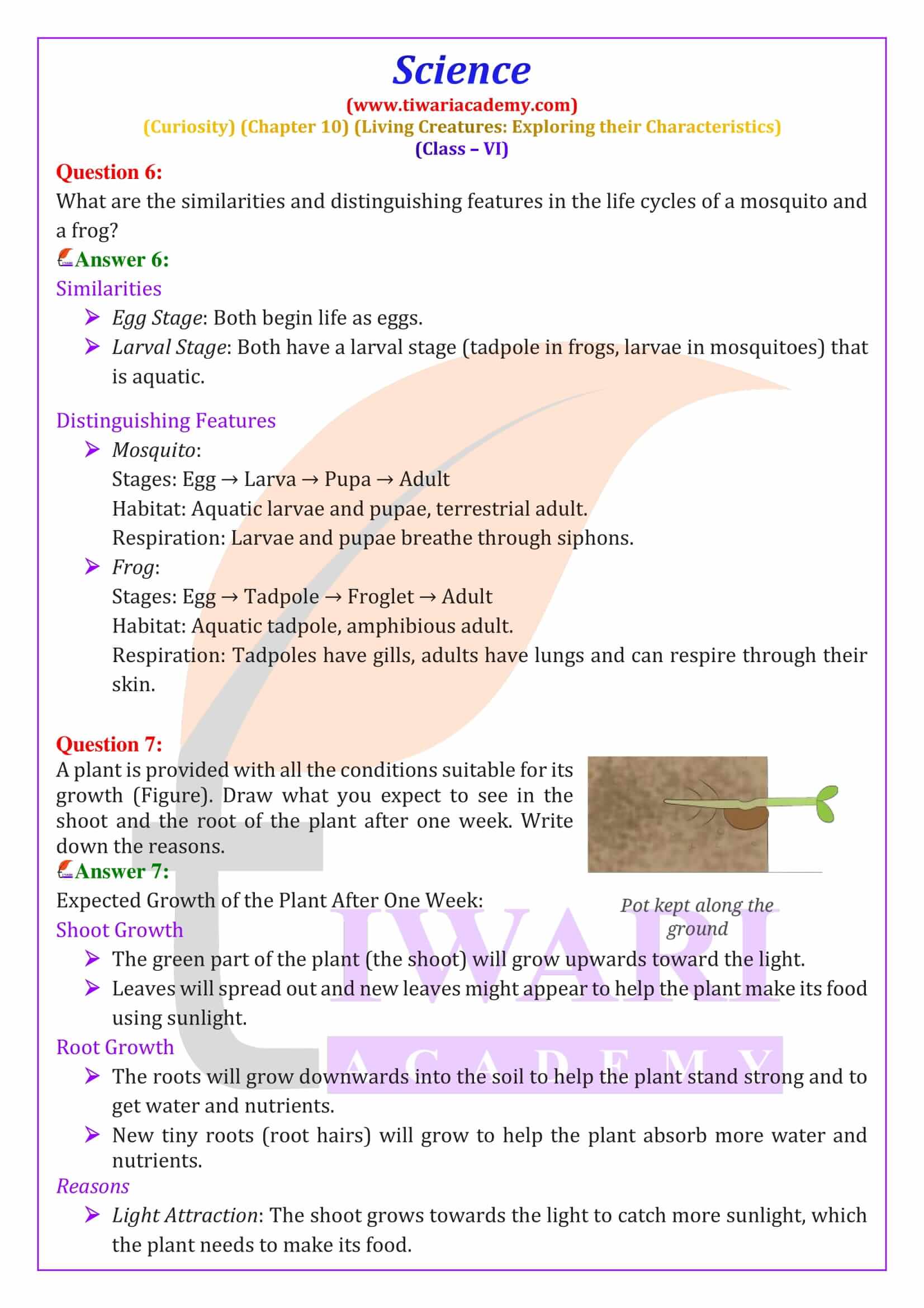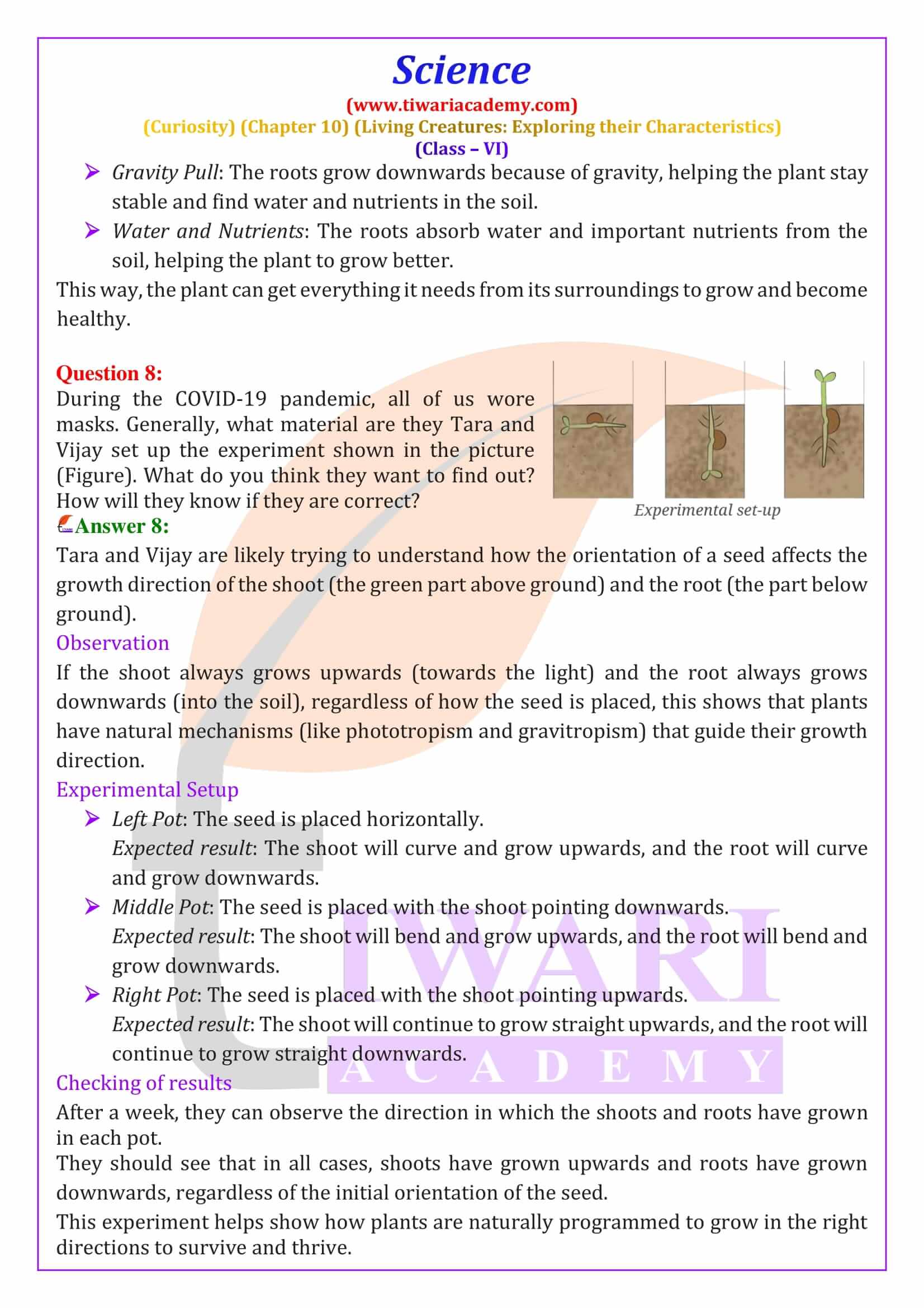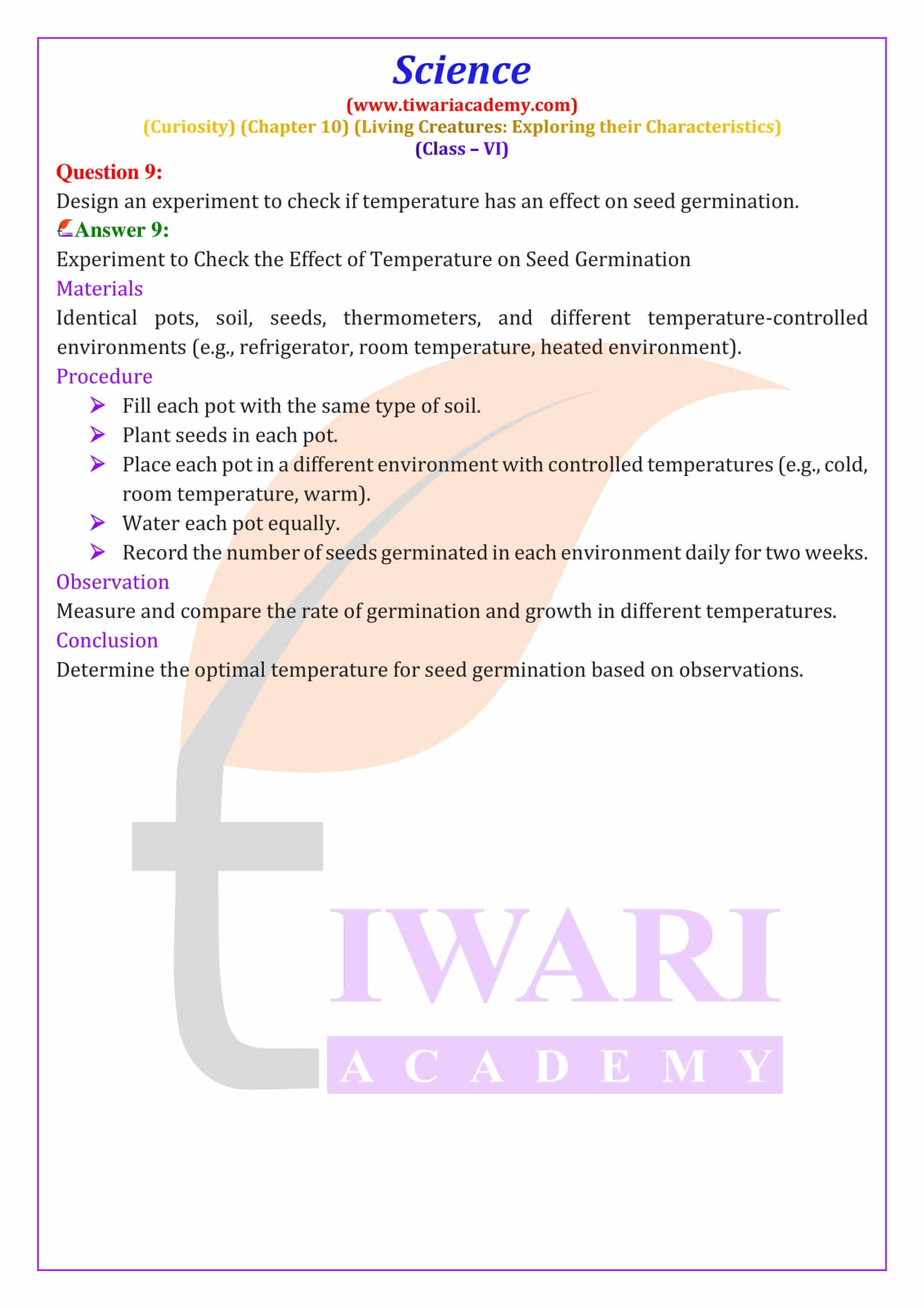NCERT Solutions for Class 6 Science Curiosity Chapter 10 Living Creatures: Exploring their Characteristics revised and updated for session 2025-26. All the question answers and solutions are based on new textbooks issued by CBSE.
Class 6 Science Curiosity Chapter 10 Living Creatures – Exploring their Characteristics
Understanding Living and Non-living Things
In this chapter 10, Avadhi and Aayush explore the differences between living and non-living things. They start by observing shells and questioning how a non-moving object can be part of a living being. Their curiosity leads to a classroom discussion where they learn that living beings exhibit characteristics such as movement, growth, respiration, excretion, response to stimuli, and reproduction. In contrast, non-living things do not exhibit these features. The chapter emphasizes the importance of these characteristics in identifying and understanding living organisms.
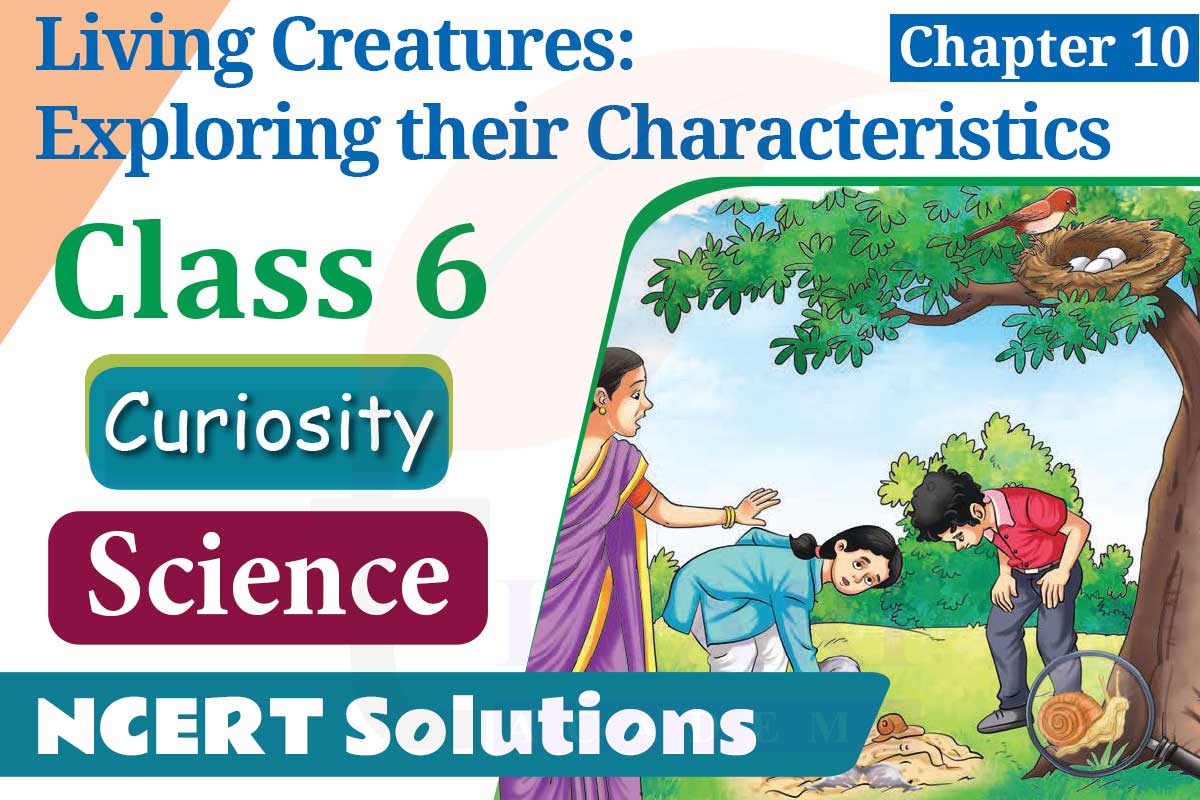
Characteristics of Living Beings
Living beings possess distinct characteristics that set them apart from non-living things. Movement is a primary characteristic, but it varies among organisms; for instance, animals move freely, while plants show movement in specific parts like flowers opening. Growth is another essential trait, as seen in the way children outgrow their clothes or plants grow larger. Nutrition is crucial for growth and development, with living beings requiring food to sustain life processes. Respiration is highlighted as a vital process involving the intake of oxygen and release of carbon dioxide, occurring in both plants and animals.
Growth and Excretion in Living Beings
Growth in living beings involves an increase in size and development, which is fueled by nutrition. All living beings, including plants, grow by utilizing nutrients from their surroundings. Excretion is another fundamental process, where waste products are removed from the body. For instance, humans excrete sweat and urine, while plants excrete excess water and minerals. This process ensures that living beings maintain a stable internal environment, which is crucial for their survival and overall health.
Response to Stimuli and Reproduction
Living beings respond to various stimuli from their environment. This response can be seen in humans reacting to a hot object or a sharp thorn, as well as in plants like the touch-me-not folding its leaves when touched. Reproduction is essential for the continuity of life, allowing living beings to produce offspring that carry on their genetic traits. This process varies among organisms but is a defining feature of all living beings. The chapter also discusses how dead organisms no longer exhibit these characteristics, marking the end of life.
Seed Germination and Plant Growth
Class 6 Science chapter 10 delves into the conditions necessary for seed germination, emphasizing the need for water, air, and suitable light or dark conditions. An experiment with bean seeds illustrates how different conditions affect germination, showing that seeds need moisture and air for successful growth. The chapter 10 explains that while light is not essential for germination, it is crucial for the subsequent growth of seedlings. The life cycle of plants is explored, highlighting stages from seed germination to the development of flowers and fruits, which produce seeds for the next generation.
Life Cycles of Animals
The chapter 10 also covers the life cycles of animals, using mosquitoes and frogs as examples. Mosquitoes go through four stages: egg, larva, pupa, and adult, each with distinct characteristics. The life cycle of a frog includes stages like egg, embryo, tadpole, froglet, and adult frog, showcasing significant changes in appearance and habitat. These life cycles illustrate the transformation and growth that occur in living beings, ensuring the continuation of their species. Observing these cycles helps in understanding the complex processes of life and the importance of each stage in the development of living organisms.
